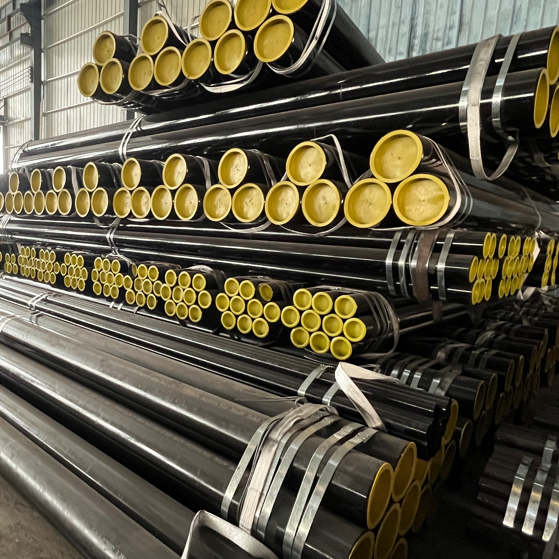ASTM A106 Thick-walled steel pipes: Steel pipes whose outer diameter to wall thickness ratio is less than 20 are called thick-walled steel pipes. It is mainly used as petroleum geological drilling pipes, cracking pipes for the petrochemical industry, boiler steel pipes, bearing steel pipes, and high-precision structural steel pipes for automobiles, tractors, etc.
The big difference between ASTM A106 thick-walled steel pipes and thin-walled steel pipes is the thickness of the steel pipe wall. Generally speaking, thin-walled steel pipes use cold-drawing technology, while thick-walled steel pipes generally use hot-rolling technology. If they are distinguished by units of measurement, then, it is generally believed that the wall thickness/steel pipe diameter equal to 0.02 is the dividing line between thick-walled steel pipes and thin-walled steel pipes. The wall thickness/steel pipe diameter less than 0.02 is a thin-walled steel pipe, and the wall thickness/steel pipe diameter greater than 0.02 is a thick-walled steel pipe. In terms of use, thin-walled steel pipes wall steel pipes are mostly used in steel pipelines. Thick-walled steel pipes are mostly used as blanks for hollow parts. Used on pressure-bearing and important steel pipelines.
ASTM A106 Thick-walled steel pipe production steps:
1. Stainless steel elbow changes the wall thickness of thick-walled steel pipes, which changes the wall thickness along the length of the steel pipe;
2. Process the square steel tube section and change the circular section into square, elliptical or polygonal shape;
3. Square steel tubes with curling and bottom sealing, square steel tubes that are curled to the outside or inside of the tube to increase the total strength of the tube end or seal the end of the square steel tube;
4. Stainless steel elbow variable diameter square steel tube, which means that the diameter of the steel pipe end or a certain part of the steel pipe is reduced;
5. Stainless steel elbows are used to bend square steel pipes. The most common contact is to turn straight steel pipes into bends with different curvature radii, such as elbows, curved steel pipes, etc.;
6. Square steel tubes with flanges and rounded edges. The former refers to the end of the tube convex inward or outward, and the latter refers to the square steel tube with bulges or grooves formed in the circumferential direction of the tube.
ASTM A106 Thick-walled steel pipes are mainly used in water supply projects, the petrochemical industry, the chemical industry, the electric power industry, agricultural irrigation, and urban construction. For liquid transportation: water supply and drainage. For gas transportation: coal gas, steam, liquefied petroleum gas. For structural purposes: piling steel pipes, bridges; steel pipes for docks, roads, building structures, etc.
 How to apply hot dipped galvanized steel pipe?
How to apply hot dipped galvanized steel pipe?
 Why should Seamless steel pipes be epoxy powder coated?
Why should Seamless steel pipes be epoxy powder coated?
 Shengtian Group successfully participated in the Russian Oil and Gas Exhibition
Shengtian Group successfully participated in the Russian Oil and Gas Exhibition
 Is API 5L Black Steel Pipe Good For Air Lines?
Is API 5L Black Steel Pipe Good For Air Lines?